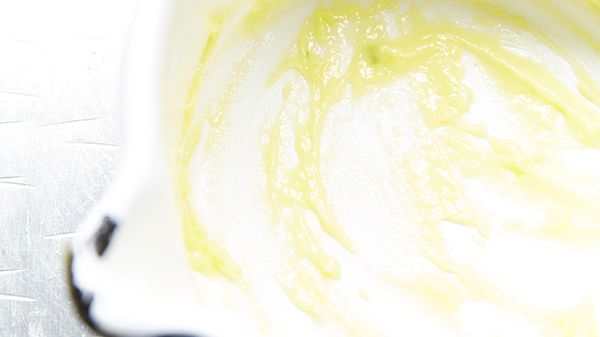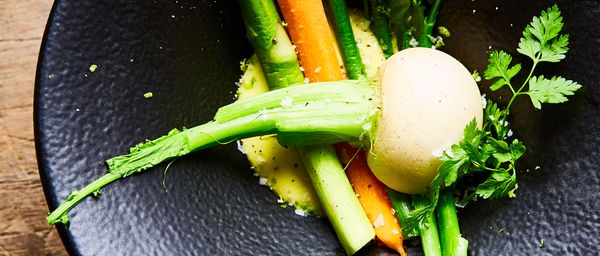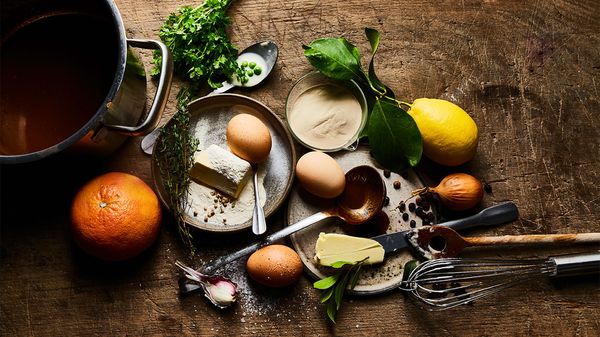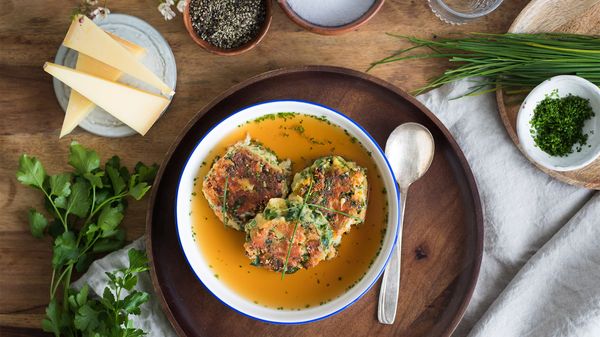
To make a creamy hollandaise, you need the freshest of eggs, the very best butter, and skill.

In traditional french cuisine, raw egg is a thickening agent
Egg yolks contain a range of substances called lecithin which act as emulsifiers, binding fat, water and other ingredients into a delicious, creamy emulsion. The taste is so good that it should come as no surprise that the sauce hollandaise has a long history dating back to Normandy in the early eighteenth century. In its simple form, the buttery flavour of hollandaise goes perfectly with vegetables, meat and fish; it can also be used as the basis for a range of other sauces such as sauce Béarnaise, sauce Maltaise and sauce Choron. Which ever version you make, the emulsification process requires no small deal of skill: if the egg is heated too strongly, it coagulates and the luxuriously creamy sauce curdles – the only option is to start all over again. For beginners, the best method is to work over a water bath.

Step 1
To make a lime-flavoured hollandaise, the first step is to melt the butter on a medium heat in an uncovered saucepan; once it starts to foam, turn the temperature down and leave it to simmer for 1-2 minutes so that the water in it evaporates off. Then remove the pan from the heat and skim off the foam with its impurities.

Step 2
Prepare a bain-marie, remembering to make sure that the bottom of the bowl is not touching the water below; if direct heat is applied, the yolk will curdle before you’ve even had time to add the 2-3 tablespoons of cold water you need to start with. Then, stir in the clarified butter – slowly – until it has all been emulsified in the sauce. Once the consistency is perfect, season the sauce with salt, pepper and any other flavours you want to add.


